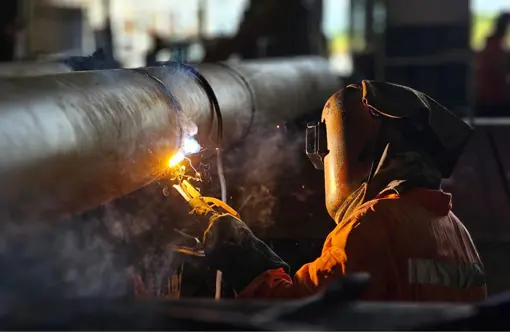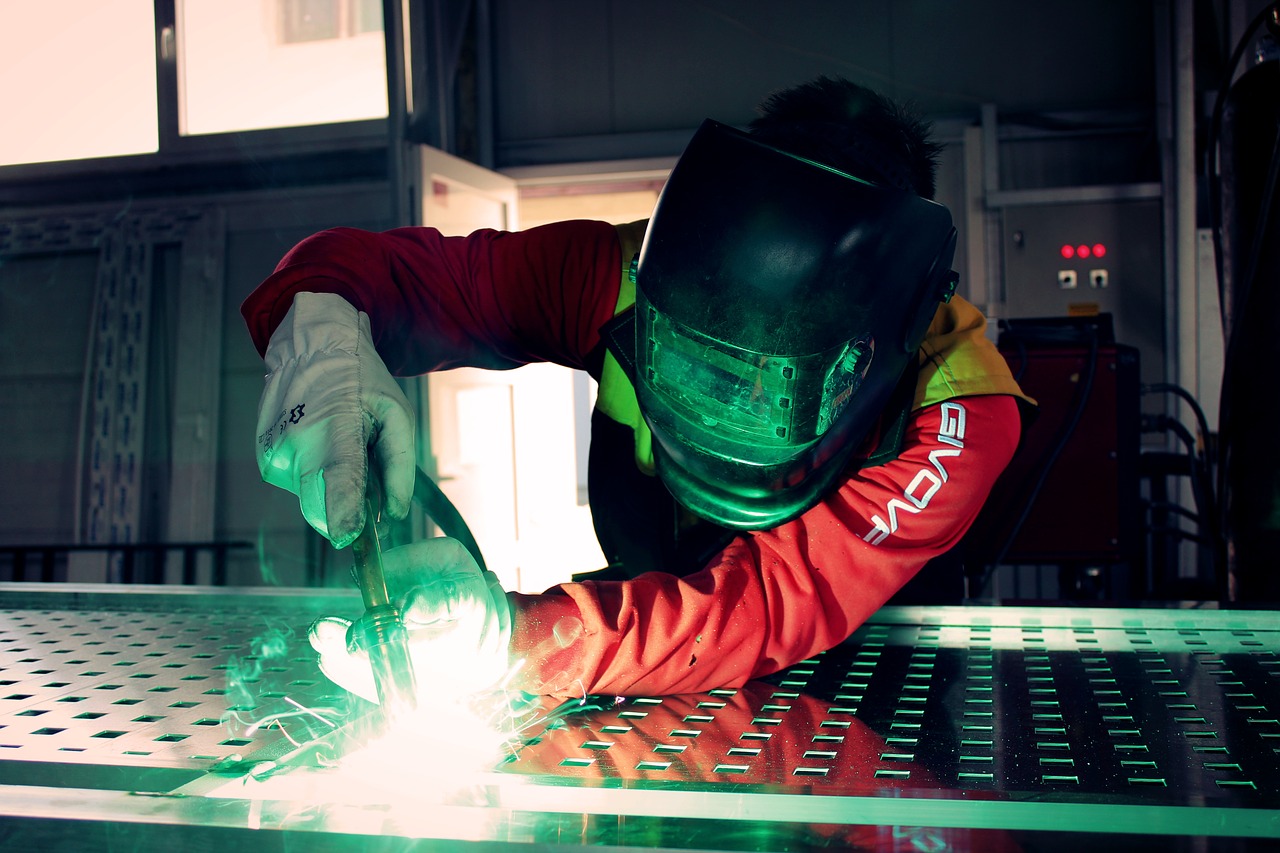All Regarding Welding: Trick Insights Into Techniques and Best Practices for Success
Welding encompasses a variety of techniques, each suited for certain materials and applications. Understanding these methods, such as GMAW, SMAW, and TIG, is vital for accomplishing suitable outcomes. Moreover, the ideal equipment and security techniques can not be ignored. As prep work and repairing play crucial duties in the welding procedure, understanding these components can substantially boost the quality of the final product. What are the essential variables that assure an effective weld?
Understanding Different Welding Strategies
Welding techniques incorporate a range of techniques, each suited to details applications and products. Amongst the most usual methods are Gas Metal Arc Welding (GMAW), Protected Metal Arc Welding (SMAW), and Tungsten Inert Gas Welding (TIG) GMAW, additionally referred to as MIG welding, is prominent for its speed and versatility, making it optimal for thin materials. SMAW, or stick welding, is preferred for its simplicity and performance in exterior settings, especially with thicker steels. TIG welding uses precision and control, making it appropriate for complex work and non-ferrous steels (Fabrication). Each method has its unique benefits and factors to consider, permitting welders to choose the very best technique based upon the project's requirements, product kind, and desired outcomes. Comprehending these strategies is important for effective welding
Important Welding Tools and Devices
While different welding methods require certain abilities, the right equipment and devices are equally vital for accomplishing quality outcomes. Vital welding tools consists of welding makers, which vary relying on the technique-- such as MIG, TIG, or stick welding. Protective equipment, including handwear covers, aprons, and safety helmets, guarantees security and convenience throughout the procedure. Furthermore, clamps and components assist secure materials in place, ensuring accuracy in welds. Consumables like welding poles, cable, and securing gas are additionally important parts that affect the quality of the weld. Additionally, tools such as grinders and cutters assist in surface area prep work and post-weld finishing, adding to an expert end result. Purchasing premium tools eventually enhances the efficiency and performance of welding jobs.
Safety And Security Practices in Welding
Proper security methods are necessary in the welding industry to safeguard workers from possible dangers. Welders need to wear proper personal safety equipment (PPE), including headgears with appropriate shading, handwear covers, and flame-resistant clothes. Appropriate ventilation is essential to lower exposure to damaging fumes and gases generated throughout the welding procedure. In addition, workers ought to be trained in the right handling of welding equipment to avoid mishaps. Fire precaution, such as keeping flammable products away from the welding location and having fire extinguishers readily available, are required. Regular evaluations of tools and workspaces can aid identify possible hazards before they cause mishaps. By adhering to these safety and security techniques, welders can produce a more secure working atmosphere and reduce threats connected with their profession.
Readying Products for Welding
Preparing products for welding is an essential step that substantially affects the quality and integrity of the end product (Welding). Proper prep work involves cleansing the surfaces to get rid of pollutants such as oil, rust, and dirt, which can jeopardize the weld. Methods such as grinding, sanding, or utilizing solvents are frequently utilized to achieve a tidy surface. In addition, making sure that the materials fit with each other well is essential; spaces can cause weak welds. It's additionally important to think about the placement and positioning of the parts, as this will certainly impact the convenience of welding and the final outcome. Selecting the ideal filler product and making certain compatibility with the base metals is necessary for achieving solid, long lasting welds.
Tips for Getting High-Quality Welds
Accomplishing high-quality welds requires attention to information and adherence to finest techniques throughout the welding procedure. Proper joint preparation is vital, making certain surfaces are tidy and complimentary from contaminants. Choosing the suitable filler product and welding technique based upon the base metals is crucial for suitable bonding. Maintaining consistent traveling rate and angle while welding can promote and stop defects uniformity. Additionally, managing warmth input is crucial; extreme warmth can result in bending and compromised joints. Regularly evaluating the welds during the process allows for immediate modifications if required. Finally, using appropriate post-weld treatments, such as cleaning and anxiety alleviation, can enhance the resilience and stability of the weld, inevitably making certain a successful result.
Repairing Typical Welding Issues
Welding typically presents challenges that can affect the top quality and integrity of the end product. Usual problems such as porosity, inconsistent weld grains, and overheating can occur, each needing particular troubleshooting techniques. Recognizing these troubles is essential for welders to enhance their skills and accomplish perfect results.
Porosity Issues Clarified
Although porosity can click here now typically be neglected, it continues to be an essential issue in welding that can endanger the integrity of a finished product. Porosity describes the presence of little gas pockets within the weld grain, which can lead and weaken the joint to early failure. This issue commonly emerges from contaminants, wetness, or improper protecting gas insurance coverage throughout the welding process. To minimize porosity, welders should validate that the base materials are tidy and completely dry, make use of proper securing gases, and maintain constant welding parameters. Frequently checking the tools and atmosphere can likewise aid determine potential concerns before they manifest in the weld. Addressing porosity successfully is essential for achieving strong, long lasting welds that fulfill quality standards.

Irregular Weld Beads
Inconsistent weld grains can substantially affect the high quality and strength of a completed product. Different factors add to this concern, including inappropriate travel speed, incorrect amperage setups, and inconsistent electrode angles. When the welder moves as well rapidly, a bead may appear narrow and lack infiltration, while relocating as well slowly can create too much accumulation. In addition, using the wrong amperage can cause either undercutting or excessive spatter, both of which concession weld integrity. The welder's strategy, such as inconsistent lantern motion, can additionally bring about uneven bead look. To mitigate these problems, welders must concentrate on maintaining constant, regulated movements and making sure appropriate devices setups to achieve uniformity in their welds. Uniformity is crucial to accomplishing solid and trustworthy welds.
Overheating and Warping Issues
Excessive warm during the welding process can lead to substantial getting too hot and contorting concerns, influencing the architectural integrity of the workpiece. These problems frequently manifest as distortion, which can endanger positioning and fit-up, making more setting up challenging. Variables adding to overheating automatic welding include the choice of welding specifications, such as voltage and travel speed, along with the sort of product being welded. To reduce these problems, welders must keep constant travel rate and ideal heat input while keeping an eye on the workpiece temperature level. Additionally, pre-heating or post-weld heat treatment can aid relieve stresses triggered by fast cooling - Montana Mobile Welding and Repair Belgrade Welding. Routine evaluation and adherence to finest practices are essential in preventing overheating and making certain the long life and dependability of bonded frameworks
Often Asked Questions
What Are the Occupation Opportunities in the Welding Sector?
The welding official site industry uses diverse occupation opportunities, including settings as welders, inspectors, engineers, and teachers. Professionals can operate in production, construction, aerospace, and vehicle markets, benefiting from strong demand and competitive wages in various functions.
Just How Can I Boost My Welding Rate Without Sacrificing High Quality?
To enhance welding rate without sacrificing top quality, one must practice reliable strategies, preserve tools, enhance setups, and boost hand-eye control. Regular training and seeking feedback can additionally substantially add to attaining much faster, top quality welds.
What Qualifications Are Readily Available for Welders?
Many certifications exist for welders, consisting of those from the American Welding Culture (AWS), the National Facility for Building And Construction Education And Learning and Study (NCCER), and numerous industry-specific companies. These qualifications boost employability and show skill proficiency.
How Does Welding Influence the Features of Metals?
Welding affects the properties of steels by altering their microstructure, which can lead to adjustments in firmness, ductility, and strength. Heat input and air conditioning rates during the procedure greatly affect these material features.
Can I Bonded Dissimilar Metals With Each Other?
